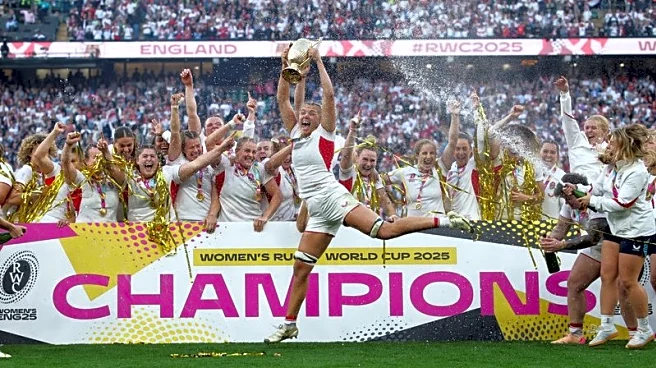What is the story about?
What's Happening?
The Women's Rugby World Cup has concluded with notable performances and memorable matches. Canada’s Sophie de Goede was recognized as the best player, showcasing versatility and resilience. The semi-final between New Zealand and Canada was highlighted as the best match, with Canada’s fast-paced game surprising the world champions. The tournament marked a turning point for women's rugby, emphasizing the need for increased investment and competitive balance among teams. The event was celebrated for its organization and the positive atmosphere, despite some uneven matches.
Why It's Important?
The Women's Rugby World Cup has demonstrated the growing popularity and potential of women's rugby on the global stage. The tournament's success highlights the importance of investing in women's sports to ensure competitive balance and development. Increased visibility and recognition of female athletes can drive further interest and support for women's rugby, encouraging more nations to invest in their programs. The event also underscores the cultural and social impact of sports, fostering inclusivity and community engagement. As women's rugby continues to evolve, stakeholders must address disparities and promote equal opportunities.
What's Next?
Looking ahead to the next World Cup in 2029, there is hope for more competitive matches and increased investment in women's rugby programs. The WXV series is expected to help bridge the gap between top teams and emerging nations. Organizers and unions must work to ensure that the momentum from this tournament is sustained, with efforts to expand the calendar and provide more opportunities for international competition. The future of women's rugby will depend on continued support and strategic initiatives to enhance the sport's profile and accessibility.
AI Generated Content
Do you find this article useful?















